It's sweet when people are in their "I just fell in LOVE w the mandoline" phase, before "MY GOD THIS THING TRIED TO KILL ME."
@Francis_Lam, twitter.
I told my kids that quote as I set my new Kyocera mini mandoline in the sink. They were washing the dishes, and I wanted them to be careful with the ceramic blade.
A few hours later, the mandoline was still in the sink where I left it, untouched and definitely not cleaned. Muttering to myself about how hard it was to find good help these days, I grabbed a dish rag and started cleaning the mandoline. I wiped across the blade…and it cut through the dishcloth and into the tip of my index finger. I looked at my finger in disbelief. The cut was a half inch deep. But that didn't hurt as much as my pride - I felt like such an idiot.
*Blogging with a butterfly bandage on the tip of your index finger is an adventure. Words with an "I" or a "K" were suddenly a challenge, and I wrote short sentences to avoid commas.
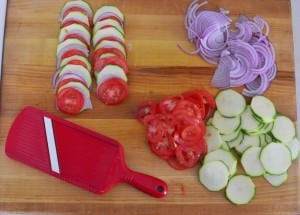 |
| That's the deadly slicer on the bottom left. When it's not going to work on my fingers, it does a great job... |
Before the bleeding stopped, the thought popped into my head. "Wow - that is one sharp blade. Maybe it's time to try a ceramic knife?"
That's right, I use injuries as an excuse to buy a new knife.
I read up a bit on ceramic knives, and bought a Kyocera Revolution santoku and paring knife set. I've used the santoku as my primary kitchen knife for the last couple of months to test it out.
Ceramic knives are sharp
…and stay sharp. Ceramics are much harder than metal; the edge doesn't roll over, like a metal knife does, so there is no need to hone a ceramic blade. A ceramic knife will hold its edge for years. But not forever. The hardness of the blade eventually becomes its downfall; microscopic chips break off of the edge of the blade, and the knife dulls as it chips more and more. After a few years of use, the knife needs to be sent back to the manufacturer to be re-ground.
Now, I was a little surprised - the santoku was sharp, but no more than a recently sharpened metal knife. Its advantage is it stays that sharp - it has not dulled in the couple of months I've been using it.
Ceramic knives are easy to clean
I was surprised how non-stick the knife surface is. Usually a quick rinse will clean the knife. At most it needs a wipe with a dishcloth (being careful of the blade, of course. I do learn, eventually).
Ceramic knives are lightweight
Now we get to the "could be good, could be bad" part of the review. Ceramic knives are remarkably lightweight. How a knife feels in your hand is a very personal experience - I may like it and you might not. I like my chef's knife on the light side, but the ceramic blade is so light that it doesn't feel right. It feels fragile…and that's where we get to the limitations of ceramic knives.
Ceramic knives are fragile
There's a downside to ceramic being harder than metal. Metal will flex and bend; ceramics break. Ceramic knives are great for straight line slicing. But there is a substantial list of things you shouldn't do with a ceramic knife:
- Prying, carving, boning - anything with bones is trouble
- Cutting foods with heavy rinds - cheese, melons, pineapple (whoops - I did the last one)
- Cutting frozen food
- Smashing (garlic) with the side of the blade
- Dropping on a hard surface
In other words, ceramic knives are hard, sharp…and brittle. Don't flex them, or they may crack; don't cut into hard objects, or they may chip. I was a little surprised by "heavy rinds" on the list, until I thought it through, and remembered my steel knives flexing as they tried to cut through a hard cheese.
No tip
This is related to the "fragile" point, above. Rounded tips are harder to break off. I occasionally use the tip of my chef's knife for fine work, like slicing shallots, and I missed having that fine point on the end.
Ceramic knives are short
The 5 ½" santoku I'm using is noticeably smaller than my 8 inch chef's knife. I can slice a flank steak with one pull of an 8 inch knife; 5 ½ inches requires a sawing motion. The longest ceramic blades I could find were 7 inch chef's knives, and it feels like I'll miss that extra inch.
Summary: Ceramic Knives are a useful, but specialized, tool
I use a chef's knife as a multi-purpose kitchen tool. It's primary use is slicing, of course. But I am not gentle with my chef's knives. I smash cloves of garlic with the flat of the blade, lean on it to add extra force to cut through squash. My chef's knife gets use as a cleaver to cut through chicken bones, and occasionally I treat it like a hammer, smashing lobster claws with the spine to crack them open.
The only thing a ceramic knife can do is the first thing - slicing. But it does that job extremely well, with minimal maintenance. I find myself reaching for it if I have a quick cutting job - when all I need is one sliced onion, or a diced pepper, and I'm done. The ceramic santoku has earned its spot in my knife block.
But now I'm wondering if I really want the 7 inch chef's knife version, to get some extra reach. Or maybe the squared off Japanese vegetable cleaver for fine slicing…
As for the treacherous mandoline? I'm keeping it, too. I just need to practice what I preach, and respect a sharp blade.
Bonus: how do you pronounce Kyocera?
This has bothered me for years…until I found out it's a shortened version of Kyoto Ceramics, and is pronounced by mashing those two words together: Key-Oh-Sarah.
Ceramic knife care and use instructions [KyoceraAdvancedCeramics.com, PDF]

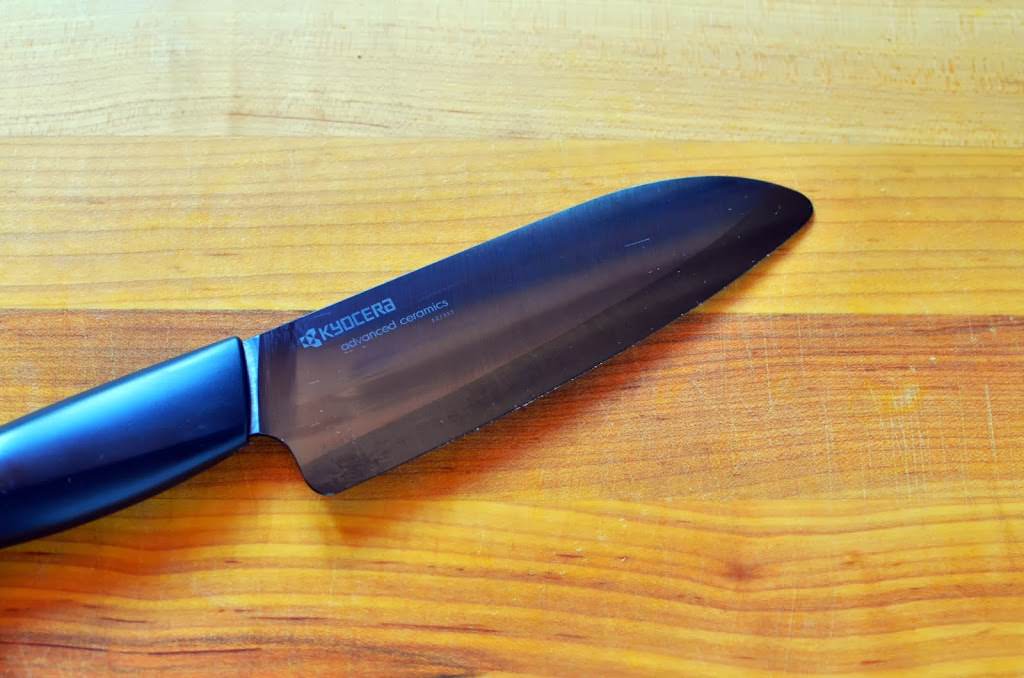
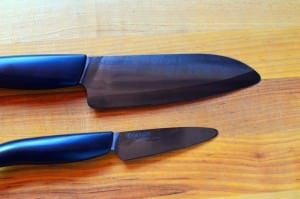
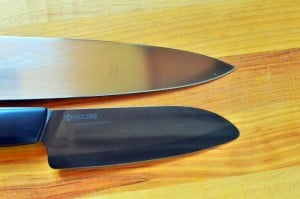
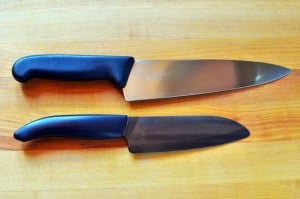

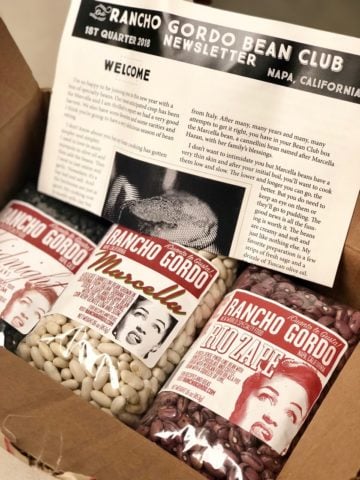


Mike V @ DadCooksDinner says
Ooh - a new toy!
Lynn says
My sister-in-law gave me a Kevlar glove for Christmas, after a similar experience to yours with my mandoline. I use it religiously instead of a clunky hand guard. Haven't sliced myself since!
scott messenger says
I have the Hamilton Beach ceramic paring knife and I love it. I've used it for 2 years and need to upgrade to larger knife for dealing with larger vegetables. I'm definitely a believer in ceramic knives.
Mike V @ DadCooksDinner says
Sorry to hear that! What did you do that broke the tips? What should I look out for?
mimi rippee says
I've broken the tips off of two of them. No more ceramic knives for me!